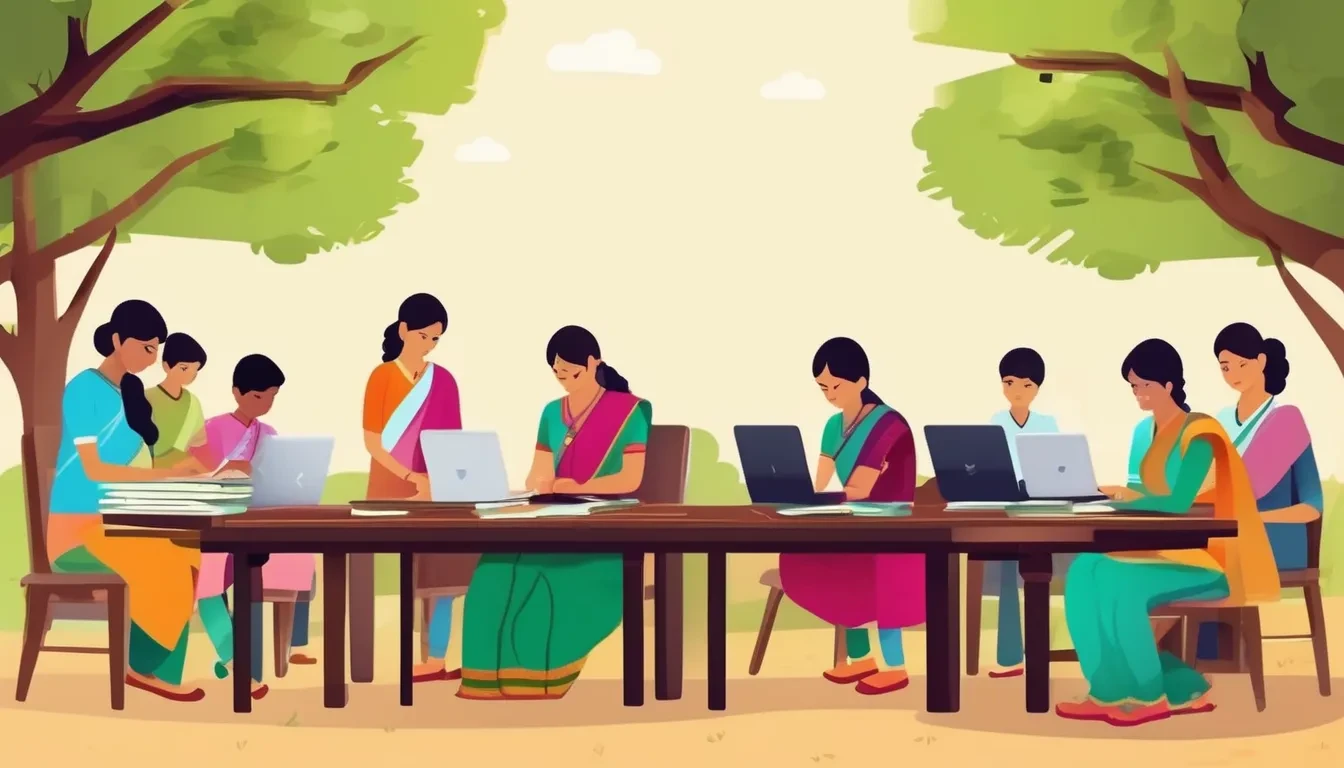
In recent years, online education has emerged as a transformative force, breaking barriers that have long hindered access to quality education in rural India. With technological advancements and increasing internet penetration, the landscape of education is witnessing a remarkable shift, ensuring that learning is no longer confined to urban centers. This blog explores how online education is leveling the playing field and empowering rural communities in India.
The State of Education in Rural India
Rural India, home to over 65% of the country’s population, has historically faced significant challenges in the education sector. Limited infrastructure, shortage of qualified teachers, and socio-economic constraints have contributed to the disparity in educational opportunities between urban and rural areas. While initiatives like Sarva Shiksha Abhiyan and Right to Education have made progress, gaps in accessibility and quality remain stark.
However, the digital revolution is offering solutions to these challenges, redefining what is possible for learners in rural regions.
The Role of Online Education in Bridging the Gap
- Access to Quality Education
- Cost-Effectiveness
- Overcoming Teacher Shortages
- Flexibility in Learning
Online education platforms have made it possible for students in remote villages to access high-quality learning resources that were previously out of reach. With a smartphone and internet connection, students can now attend live classes, access recorded lectures, and learn from subject-matter experts.
Traditional education often comes with hefty expenses, including tuition fees, commuting costs, and the price of physical textbooks. Online education significantly reduces these costs, making learning more affordable for rural families. Many platforms also offer free or subsidized courses, further lowering financial barriers.
The lack of qualified teachers in rural areas has been a persistent issue. Online platforms bring experienced educators to the screens of students, ensuring they receive the guidance needed to excel. Virtual classes, supplemented by AI-driven learning tools, also help personalize the learning experience.
One of the most significant advantages of online education is its flexibility. Students can learn at their own pace and schedule, accommodating agricultural or household responsibilities that are often a priority in rural settings. This flexibility ensures that education does not come at the expense of other essential tasks.
Key Drivers of Online Education in Rural India
- Government Initiatives
- Affordable Technology
- Localized Content
- Public-Private Partnerships
Programs like BharatNet aim to connect India’s villages with high-speed internet, creating a robust digital infrastructure. Additionally, schemes like SWAYAM and DIKSHA provide free access to online courses and resources, empowering rural learners.
The proliferation of affordable smartphones and data plans has been a game-changer. Telecom companies like Jio have made high-speed internet accessible even in the remotest corners of India, enabling students to connect to online learning platforms seamlessly.
Edtech platforms are increasingly offering courses in regional languages, catering to the diverse linguistic landscape of rural India. This localization ensures that language is no longer a barrier to quality education.
Collaborations between government bodies and private edtech companies have further strengthened the digital learning ecosystem. Initiatives like BYJU’S partnership with the NITI Aayog to provide free tablets and learning resources to underserved students highlight the impact of such alliances.
Success Stories: Transforming Lives Through Online Education
- Empowering Women Through Digital Literacy
- STEM Education in Remote Areas
- Competitive Exam Preparation
In rural Bihar, initiatives like the ‘Internet Saathi’ program have equipped women with digital skills, enabling them to access online education. Many women have used these platforms to learn vocational skills, opening up new avenues for financial independence.
Through platforms like Khan Academy and Vedantu, students in villages are now learning advanced subjects like coding, robotics, and AI. These opportunities prepare them for careers in STEM fields, breaking the cycle of limited job prospects.
Platforms like Unacademy and Gradeup are providing rural students with the resources to prepare for competitive exams like NEET, JEE, and UPSC. Success stories from these platforms underscore how online education is leveling the playing field for aspirants from all backgrounds.
Challenges to Address
While the potential of online education is immense, several hurdles need to be overcome to ensure its widespread adoption and effectiveness:
- Digital Divide
- Digital Literacy
- Quality Assurance
- Cultural Barriers
Despite progress, a significant portion of rural India still lacks access to reliable internet and devices. Bridging this digital divide is essential to ensuring inclusive education.
Many rural families are unfamiliar with technology, creating a steep learning curve for both students and parents. Initiatives aimed at building digital literacy can address this gap.
Not all online education platforms maintain the same level of quality. Ensuring that students access credible and effective learning resources is crucial.
In some rural communities, traditional mindsets may resist online education. Advocacy and awareness campaigns can help change perceptions and highlight the benefits of digital learning.
The Way Forward
To unlock the full potential of online education in rural India, stakeholders must work collaboratively:
- Infrastructure Development: Expanding internet connectivity and providing affordable devices will be key to reaching the most remote learners.
- Localized Content: Developing culturally relevant and language-specific courses will ensure greater inclusivity.
- Teacher Training: Equipping educators with the skills to leverage online platforms will enhance the learning experience.
- Policy Support: The government must continue to support and incentivize digital learning initiatives through policy frameworks and funding.
- Community Engagement: Involving local communities in the planning and execution of online education programs will drive acceptance and participation.
Conclusion
Online education is not just a tool; it is a revolution that holds the promise of democratizing learning in rural India. By addressing existing challenges and leveraging technology’s full potential, we can create a future where every child, regardless of their location, has access to quality education. As we move forward, the collective efforts of governments, edtech companies, and communities will ensure that this vision becomes a reality.
Let us embrace this opportunity to break barriers and empower the next generation of learners in rural India.

.png)